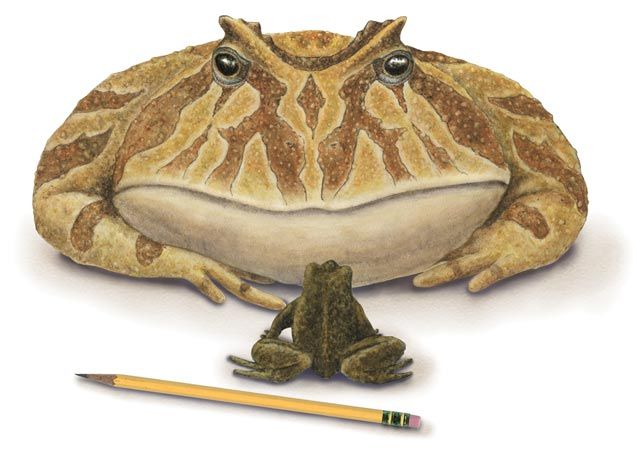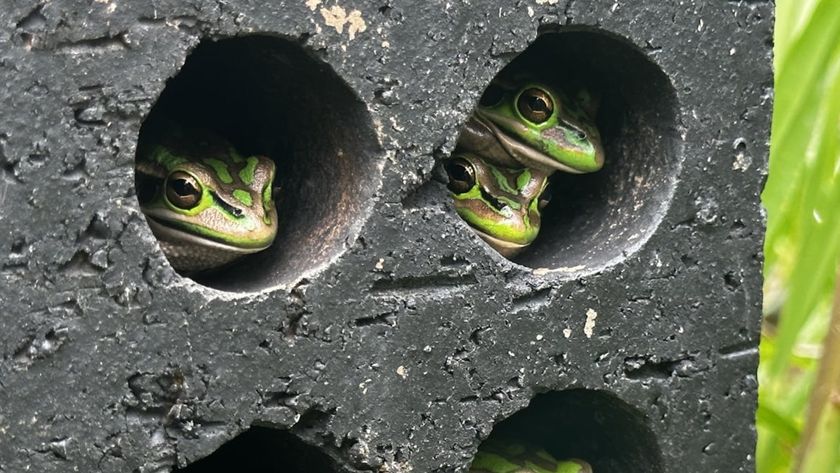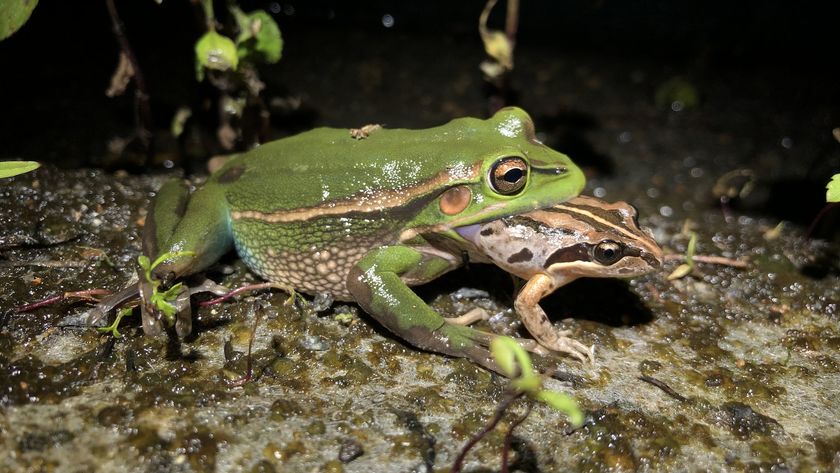
An ancient, predatory creature known as the devil frog may have looked even scarier than previously thought.
The monster frog, Beelzebufo ampinga, lived during the Cretaceous Period in what is now Africa, and sported spiky flanges protruding from the back of its skull and platelike armor down its back, almost like a turtle shell.
"We knew it was big; we knew it was almost certainly predatory," said study co-author Susan Evans, a paleontologist at the University College London. "What the new material has shown us is that it was even more heavily armored than we imagined."
The massive frog's spiked body armor may have helped it fend off the dinosaurs and crocodiles that prowled during that time. [See Photos of the Devil Frog and Other Freaky Frogs]
Elusive lineage
The researchers first discovered a few bone fragments from a mystery frog in Madagascar in 1998, but it wasn't until 2008 that they had enough pieces to identify the species, which they dubbed the devil frog, or Beelzebufo ampinga. The massive frog lived between 70 million and 65 million years ago.
When the team analyzed the frog's morphology, they found that physically, it fit in with a family of horned frogs called the Ceratophryidae, which are now found only in South America.
Sign up for the Live Science daily newsletter now
Get the world’s most fascinating discoveries delivered straight to your inbox.
But to reach Madagascar from South America, the frogs would have needed to hop along a passageway, possibly through Antarctica, that linked the two landmasses. But that route was submerged underwater by 112 million years ago, Evans said.
That would mean that devil frogs must have diverged from their South American cousins prior to that submergence, pushing back the origin of Ceratophryidae by more than 40 million years, Evans said.
More specimens
Over the course of the next five years, the team found several more bone fragments of Beelzebufo ampinga. In the new study, they combined all of the fragments to do a much more complete reconstruction of the devil frog.
The new analysis confirms the frog's lineage in the Ceratophryidae family. It also downgrades the amphibian's size — instead of being the biggest frog that ever lived, it may be closer to the size of an African bullfrog, which grows to about 10 inches (25.4 centimeters) across.
Even so, the analysis reveals that the devil frog was even fiercer-looking than previously thought. Past studies had suggested it had a huge, globular head; sharp teeth; and short back legs, but the spiky flanges and the plates embedded in its skin were a surprising discovery.
The frogs may have hunted like African bullfrogs, hiding before pouncing on a small mammal.
It's not clear what the frogs used the body armor for, but one possibility is that the sculptured bones may have been an adaptation to a dry environment that allowed the frogs to burrow underground, where they were less likely to bake in the hot sun, Evans said.
But the armor may also have been protection.
"There were an awful lot of things roaming around that would have liked a bite out of a big, juicy frog," such as dinosaurs, crocodiles and even strange mammals that once lived on the Gondwana supercontinent, Evans told LiveScience.
The findings were published Jan. 28 in the journal PLOS ONE.
Follow Tia Ghose on Twitter and Google+. Follow LiveScience @livescience, Facebook & Google+. Original article on LiveScience.

Tia is the managing editor and was previously a senior writer for Live Science. Her work has appeared in Scientific American, Wired.com and other outlets. She holds a master's degree in bioengineering from the University of Washington, a graduate certificate in science writing from UC Santa Cruz and a bachelor's degree in mechanical engineering from the University of Texas at Austin. Tia was part of a team at the Milwaukee Journal Sentinel that published the Empty Cradles series on preterm births, which won multiple awards, including the 2012 Casey Medal for Meritorious Journalism.











